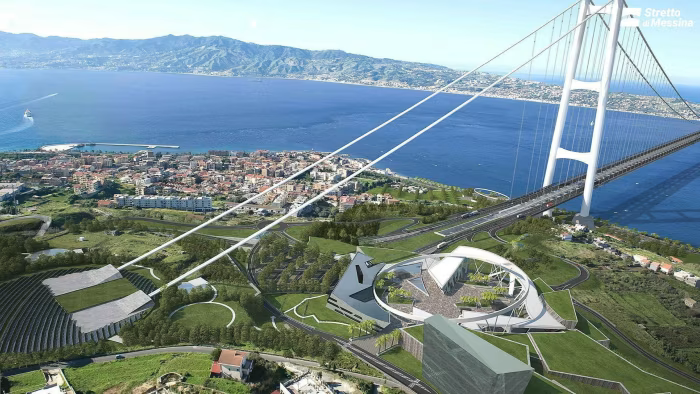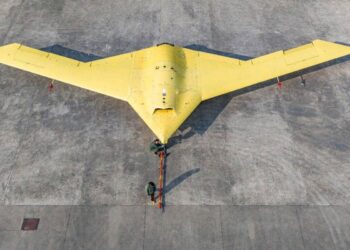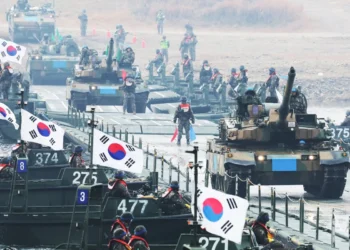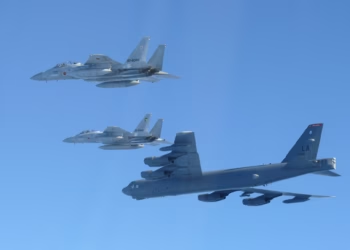ROME (Realist English). Italy’s government, led by Prime Minister Giorgia Meloni, is preparing to approve the long-delayed construction of a €13bn suspension bridge across the Messina Strait, resurrecting a decades-old project and rebranding it as a key element of national security and NATO defence infrastructure.
The 3.3km bridge, which would connect Sicily to the Italian mainland, has been proposed and shelved numerous times since the 1970s, often cited as essential for economic growth in southern Italy — one of the country’s poorest regions. But Rome now says the project also serves a military purpose, aligning with NATO’s call for members to invest 1.5% of GDP in strategic infrastructure as part of an overall 5% defence spending target.
“The Messina Strait bridge constitutes fundamental infrastructure for military mobility,” the government wrote in an April report, highlighting the presence of NATO bases in southern Italy and the growing strategic importance of the Mediterranean.
The Meloni government is seeking to count the project toward Italy’s NATO spending commitments. Officials argue the bridge will enhance the movement of Italian and allied forces, particularly in the face of increased Russian activity in the region, including ties with Libya.
“We see Russia increasingly projecting itself into the Mediterranean,” Meloni said at the NATO summit in June, warning of “hybrid threats” and adversaries operating on the alliance’s southern flank.
Despite the geopolitical framing, defence experts remain sceptical. Alessandro Marrone, head of defence programmes at Italy’s Institute for International Affairs, said the project “stretches the definition” of military infrastructure, as NATO’s priority remains rapid deployment to Eastern Europe — a route that typically runs through the Adriatic, by air, or via the Alps.
Historical efforts to link Sicily to the mainland stretch back to ancient Rome — with legends of elephants crossing on makeshift rafts — but modern attempts have repeatedly collapsed under political and financial pressures. A €3.9bn contract awarded in 2005 under Silvio Berlusconi was cancelled after his government fell. Revived in 2008, the project was again shelved in 2011 amid Italy’s debt crisis.
The latest iteration of the bridge sees the price tag triple from early estimates, rising from €4.4bn to €13bn. Local opposition remains strong in Messina, where residents fear urban disruption, station relocations, and long-term economic uncertainty.
Beyond cost, some analysts warn the bridge itself could become a strategic liability. In a 1987 report, General Gualtiero Corsini cautioned that the structure’s visibility and symbolic value would make it “an obvious target” in any military conflict — requiring air defence and anti-missile systems if classified as military infrastructure.
Marrone echoed this, noting that while the bridge may be vulnerable to sabotage or serve as a propaganda target, it is unlikely to be militarily critical.
“It’s an easy target symbolically,” he said. “But Russian military planners know Italian troops heading to Poland or the Baltics won’t be crossing the Messina bridge.”
Even so, the Meloni government is determined to move ahead, touting the plan not only as a symbol of national unity but also as a strategic pillar in a shifting Mediterranean security landscape. Construction is expected to begin once final approval is secured, with completion projected later in the decade.


















